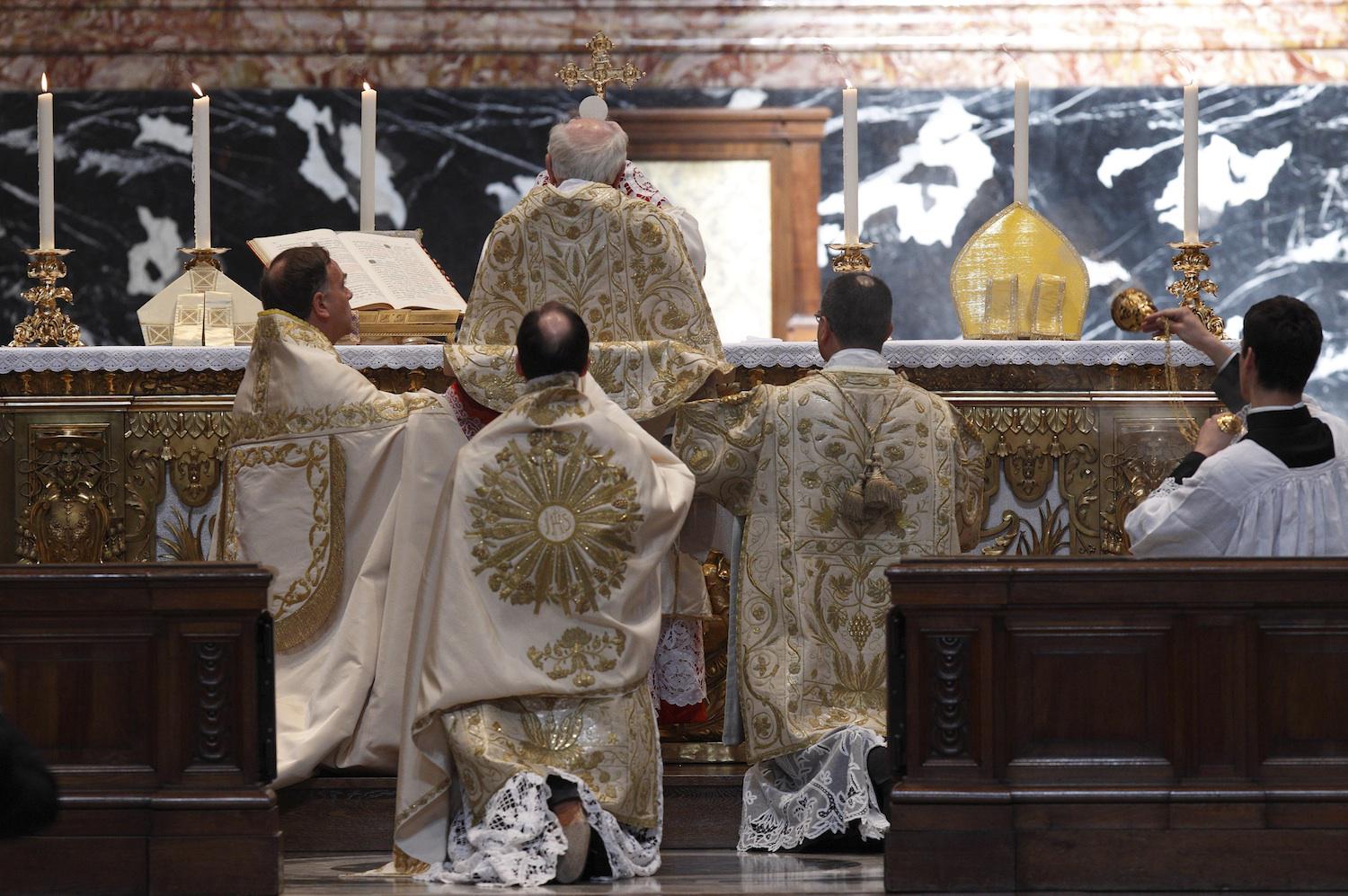This Article is taken from RORATE CAELI
The Church of Santa Maria della Consolazione,
Milan, Italy.
(Editor: If Chartres Cathedral is anything to go by, don't even think of giving this Milanese Church
a fresh look by re-painting the facade. Parishioners will be divided within days.
It's fine just the way it is.)
Illustration: RORATE CAELI
It is the Church of Santa Maria della Consolazione, also known as Santa Maria al Castello and Madonna del Castello (as it is located close to the Sforzesco Castle), which will host the Liturgies Celebrated in the Venerable and Ancient Rite of Saint Ambrose.
This Church was built on the esplanade of the Castle, as its Oratory, in 1471, by Galeazzo Maria Sforza, and Dedicated to Our Lady of Consolation, by declaration of the Duke of Lombardy. The Church was entrusted in 1492 to the Augustinian Friars, who added a small Convent, which was probably demolished during expansions of the Castle. In 1599, the present Church was rebuilt where it stands today.
Santa Maria della Consolazione,
Milan, Italy.
The Altarpiece of The Virgin of Consolation (1502)
and the Coffered Ceiling with paintings
by Camillo Procaccini (1561 † 1629).
Illustration: LITURGY
The Church is ideally located in the centre of Milan, close to the Milan Cadorna subway station and several bus lines. By contrast, the traditional Milanese Community was previously housed in a modern concrete Church of little historical or architectural interest, San Rocco al Gentilino, which is relatively far from the City Centre. The Saint Cécile Schola (Parish of Saint-Eugène – Sainte Cécile in Paris) had the honour of singing in this Church, for Sunday Mass, Celebrated in the Ambrosian Rite by Fr Federico Gallo during his Pilgrimage to Milan in 2013.
The Traditional Ambrosian Office begins at Santa Maria della Consolazione on Sunday, 11 January 2015, the First Sunday after Epiphany. As before, the Mass will be sung every Sunday and Holy Day of Obligation at 10 a.m.
Schola Saint Cécile, 29 December 2014.
The Traditional Ambrosian Office begins at Santa Maria della Consolazione on Sunday, 11 January 2015, the First Sunday after Epiphany. As before, the Mass will be sung every Sunday and Holy Day of Obligation at 10 a.m.
Schola Saint Cécile, 29 December 2014.



.jpg&container=blogger&gadget=a&rewriteMime=image%2F*)





.jpg&container=blogger&gadget=a&rewriteMime=image%2F*)

